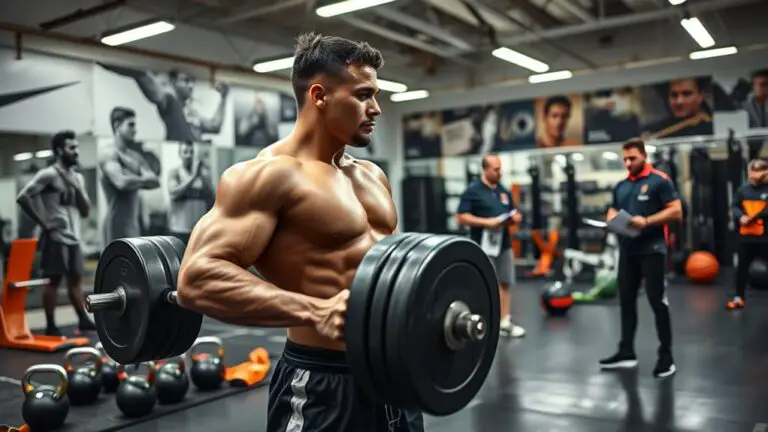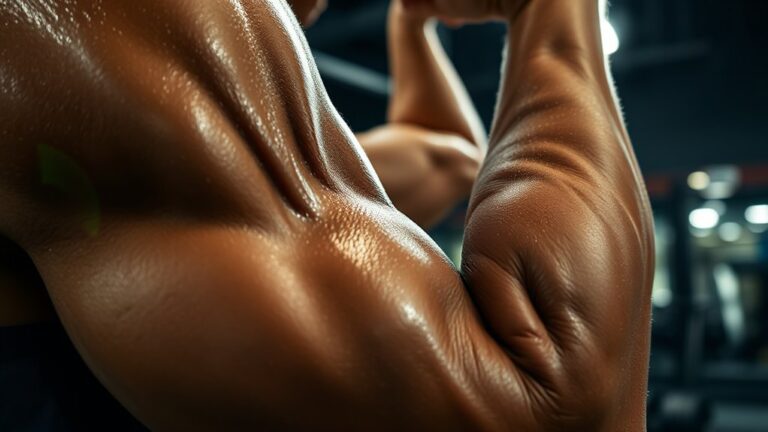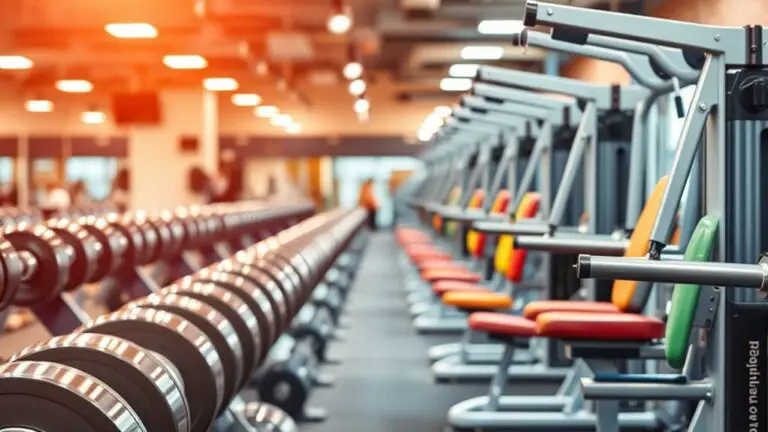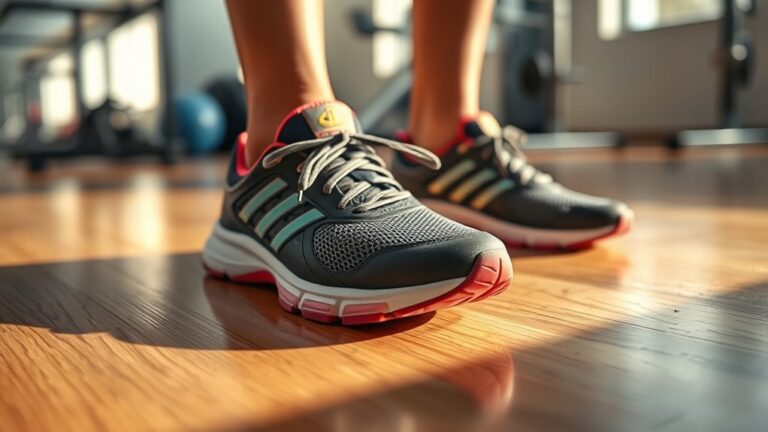How to Improve Your Performance in a Powerlifting Meet
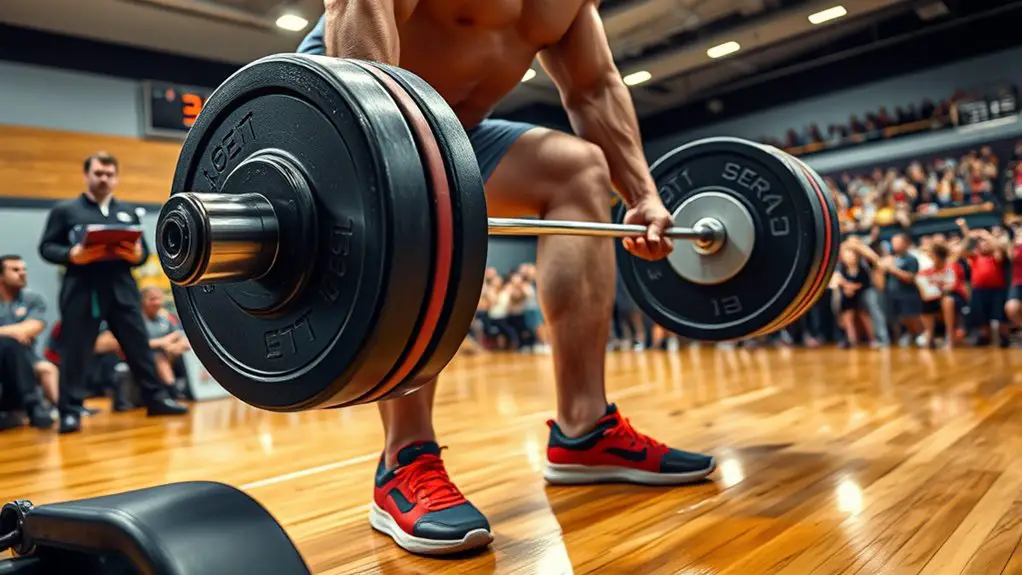
To improve your performance in a powerlifting meet, you need to understand the competition format and develop a solid strategy. Perfect your lifting technique through practice and refine your grip and stance. Taper your training before the meet to focus on key lifts while allowing for recovery. Prioritize nutrition and hydration to fuel your performance, and maintain mental focus through visualization and positive affirmations. When you implement these strategies, you’ll reveal further insights for success.
Understanding the Competition Format
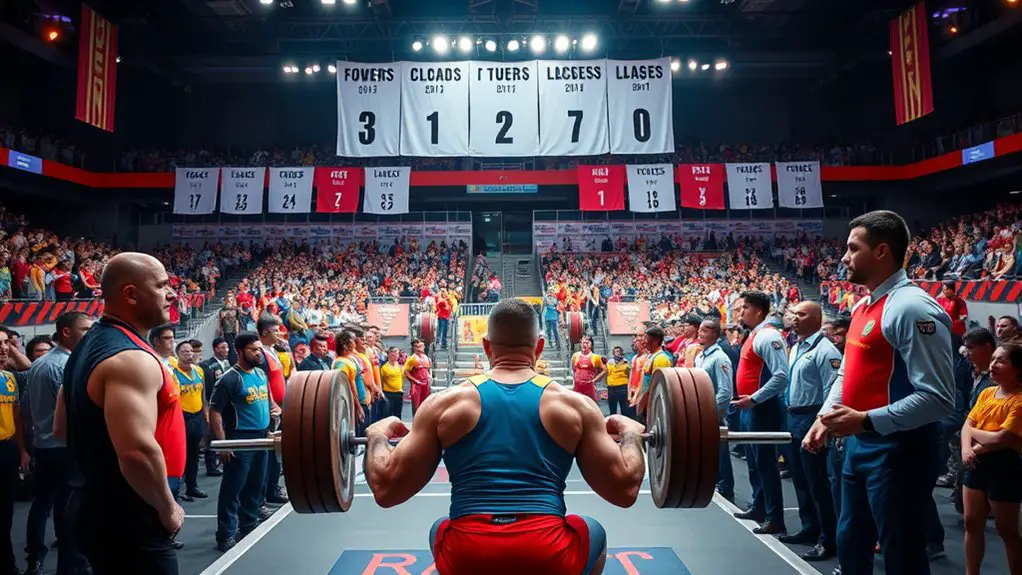
When you’re stepping onto the platform for a powerlifting competition, understanding the competition format can make all the difference in your performance. Familiarizing yourself with the competition rules is essential; they dictate everything from lift attempts to judging criteria. Knowing your weight class is equally important, as it determines who you’ll compete against and can influence your strategy for the day.
You should also be aware of the different lifter categories, such as equipped versus raw lifting, as they affect your approach and mindset. Understanding scoring methods, like how your best lifts contribute to your total score, can help you plan your attempts effectively. Each of these elements plays a significant role in your overall strategy. By grasping the competition format, you’re not just participating; you’re maximizing your potential for success. Remember, preparation is key, and knowledge is a powerful tool in your powerlifting journey.
Perfecting Your Lifting Technique
To maximize your powerlifting performance, focusing on your lifting technique is vital. By fine-tuning your grip position, foot placement, and breathing techniques, you can greatly enhance your stability and strength during lifts. Let’s break down these essential elements so you can lift with confidence and efficiency.
Proper Grip Position
While mastering the proper grip position is often overlooked, it can greatly impact your overall powerlifting performance. Your grip width and hand placement are essential for optimizing strength and stability. A wider grip can enhance leverage in bench pressing, while a narrower grip may provide better control during squats or deadlifts. Experiment with different widths to find what feels most comfortable and strong for you. Remember, consistent practice is key; practice your grip position during training to build muscle memory. A solid grip not only helps you lift more effectively but also reduces your risk of injury. Stay focused on perfecting this aspect, and you’ll notice significant improvements in your lifts come competition day.
Foot Placement Strategy
Foot placement is a critical factor in maximizing your lifting potential and ensuring proper technique. Your foot positioning directly impacts balance and stability, so you need to experiment with different stance widths. A wider stance can enhance stability in squats while allowing you to engage your hips more effectively. Conversely, a narrower stance may improve your leverage and speed during deadlifts.
As you train, pay attention to how changes in foot placement affect your performance. Don’t hesitate to adjust your foot positioning based on the lift and your body mechanics. Consistent practice will help you discover the perfect stance width that suits your lifting style, ultimately leading to better performance in your powerlifting meets.
Breathing Techniques Explained
Finding the right foot placement is just one aspect of your lifting technique; mastering your breathing is equally essential for ideal performance. Breath control can make the difference between a successful lift and a missed attempt. Here’s how to perfect your breathing:
- Diaphragmatic Breathing: Focus on filling your diaphragm, not just your chest. This increases stability.
- Inhale Before Your Lift: Take a deep breath at the bottom of your movement to create intra-abdominal pressure.
- Hold Your Breath: Maintain breath control during the lift to support your core and spine.
- Exhale at the Top: Release your breath once you’ve completed the lift to help relax your muscles.
Master these techniques, and you’ll elevate your performance in any powerlifting meet!
Tapering Your Training Before the Meet
As you approach your meet, tapering your training is essential for maximizing performance. By adjusting your training volume and prioritizing recovery time, you’ll guarantee your muscles are primed and ready to perform at their best. This strategic reduction in intensity and workload can make all the difference when it’s time to lift.
Adjusting Training Volume
While you may feel tempted to maintain your usual training intensity as your competition approaches, adjusting your training volume through a process known as tapering can greatly enhance your performance. Tapering allows your body to recover while optimizing strength. Here’s how to effectively implement volume adjustments in your training cycles:
- Gradually reduce volume: Cut down on sets and reps while maintaining intensity.
- Prioritize key lifts: Focus on your squat, bench, and deadlift to refine technique.
- Incorporate lighter sessions: Use lighter weights to keep your muscles activated without overexerting.
- Listen to your body: Monitor how you feel and adjust volume accordingly to avoid fatigue.
Prioritizing Recovery Time
To maximize your performance on competition day, it’s essential to prioritize recovery time in the weeks leading up to the meet. Tapering your training allows your muscles to repair and recharge. Focus on active recovery techniques like light cardio, stretching, and mobility work to promote blood flow and reduce soreness.
Sleep optimization is equally important; aim for 7-9 hours of quality sleep each night. Good sleep enhances muscle recovery, cognitive function, and overall energy levels.
As the meet approaches, reduce your training volume while maintaining intensity to guarantee your body feels fresh. Remember, recovery isn’t just a luxury; it’s a critical component of your success. Embrace this time to prepare mentally and physically for your best performance.
Nutrition Strategies for Optimal Performance

Understanding the critical role nutrition plays in powerlifting can greatly enhance your performance and recovery. To maximize your results, consider these strategies:
Nutrition is vital for optimizing performance and recovery in powerlifting. Implement these strategies for better results.
- Macronutrient Balance: Verify you’re consuming the right proportions of proteins, fats, and carbohydrates to fuel your workouts and support muscle recovery.
- Hydration Strategies: Maintain hydration before, during, and after your meet. Dehydration can severely impact strength and endurance.
- Pre Meet Fueling: Focus on energy sources that digest easily yet sustain your strength—think complex carbs and lean proteins.
- Meal Timing: Schedule your meals effectively to maximize energy levels. Eating 2-3 hours before lifting can help stabilize blood sugar and enhance performance.
Incorporate these elements into your routine to improve supplement effectiveness, manage weight, and support peak digestion. With the right nutrition strategies, you’ll elevate your powerlifting game considerably.
Mental Preparation and Focus Techniques
Mental preparation is just as essential as physical training in powerlifting, and mastering it can set you apart from your competition. To enhance your performance, start incorporating visualization techniques into your routine. Imagine each lift in vivid detail: the setup, the movement, the successful completion. This mental rehearsal not only builds confidence but also prepares your mind for the actual event.
Alongside visualization, use positive affirmations to reinforce your self-belief. Phrases like “I am strong” or “I can lift this weight” can create a powerful mental environment, helping you push through challenges. Repeat these affirmations daily, especially leading up to your meet.
Finally, practice mindfulness to maintain focus. Before each lift, take a moment to center yourself, clear your mind, and immerse in the present. Combining these techniques will not only sharpen your mental edge but also boost your overall performance when it matters most.
Post-Meet Recovery and Reflection
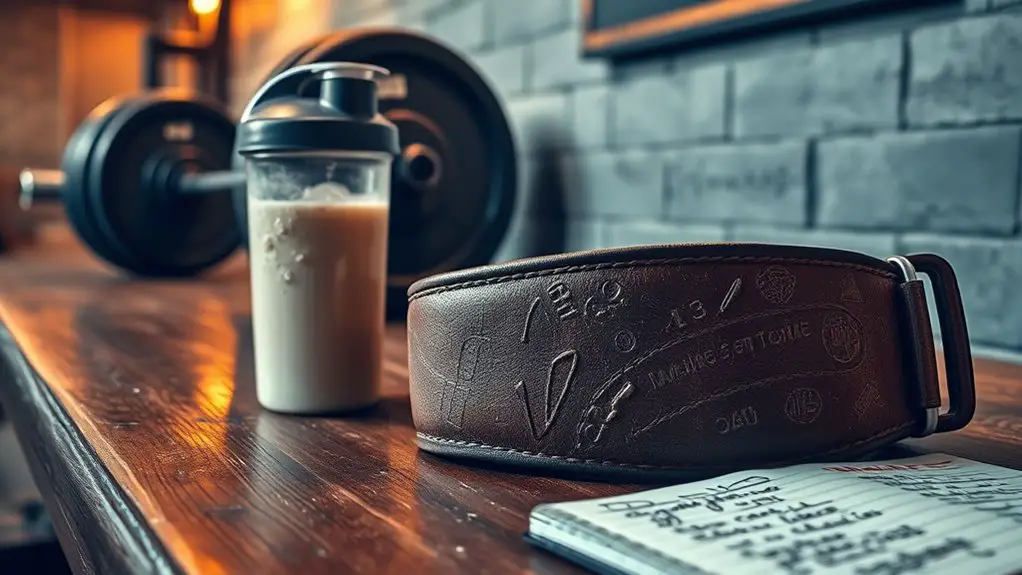
After the intensity of competition, how you recover can greatly influence your future performance. Proper post-meet recovery isn’t just physical; it’s also about mental reflection. Here are four key steps to enhance your recovery:
- Rest and Nutrition: Prioritize sleep and hydration, fueling your body with nutrient-dense foods to aid recovery.
- Post Meet Evaluation: Analyze your performance metrics. What went well? What needs improvement? This insight shapes your training.
- Performance Journaling: Document your experiences, including thoughts, feelings, and learnings from the meet. This reflection reinforces your growth mindset.
- Active Recovery: Engage in light activities like walking or yoga to promote blood flow and reduce soreness.
Frequently Asked Questions
What Gear Should I Wear During the Competition?
When it comes to gear for your competition, you’ll want to focus on a few key items. First, invest in quality lifting shoes for maximum stability. Supportive wraps can enhance your joint security, so don’t skimp on those. Make sure your singlet meets the competition’s requirements, as that’s a must. Finally, choose a belt that offers the right support without being restrictive. With the right gear, you’ll feel more prepared to tackle the meet ahead!
How Do I Choose My Opening Attempts?
Imagine setting sail on a vast ocean; your opening strategy is your compass. Choosing your opening attempts is like selecting the right wind to catch. You should consider your past performances and how you’ve trained, ensuring your weight selection is both challenging and achievable. Start with a weight that builds confidence and sets the tone for the day. Remember, a solid start can guide your journey to success, so trust your instincts and sail wisely.
Can I Compete if I Have an Injury?
Competing with an injury isn’t ideal, but it’s possible with proper injury management. You’ve gotta assess your condition honestly and guarantee you’re competition ready. If you can maintain your strength without exacerbating the injury, consider participating. However, prioritize your long-term health over immediate competition goals. Consult a healthcare professional or coach for personalized advice. Remember, your well-being comes first, and there’ll always be more meets in the future.
What Is the Role of a Coach at the Meet?
Imagine stepping onto the platform, heart racing, as your coach stands nearby, ready to support you. A coach’s responsibilities at the meet are essential—they strategize attempts, provide technical guidance, and keep you mentally focused. They’re your ultimate ally, offering encouragement and confidence when nerves kick in. With their expertise, you’re more likely to execute lifts effectively. Trusting your coach not only enhances performance but also creates a powerful partnership that fuels your success.
How Can I Handle Competition Day Nerves?
Handling competition day nerves is essential for success. Start with pre-competition rituals that ground you, like deep breathing or visualization techniques. These help calm your mind and focus your energy. Mental preparation is just as important; remind yourself of your training and achievements. Write down positive affirmations or mantras to reinforce confidence. Embrace the adrenaline, turning it into motivation rather than a distraction. You’ve put in the work, so trust yourself and perform.


